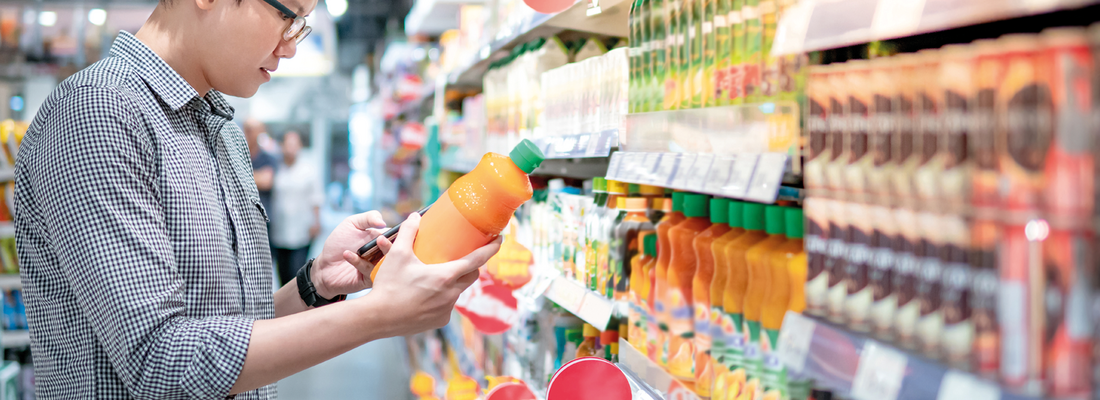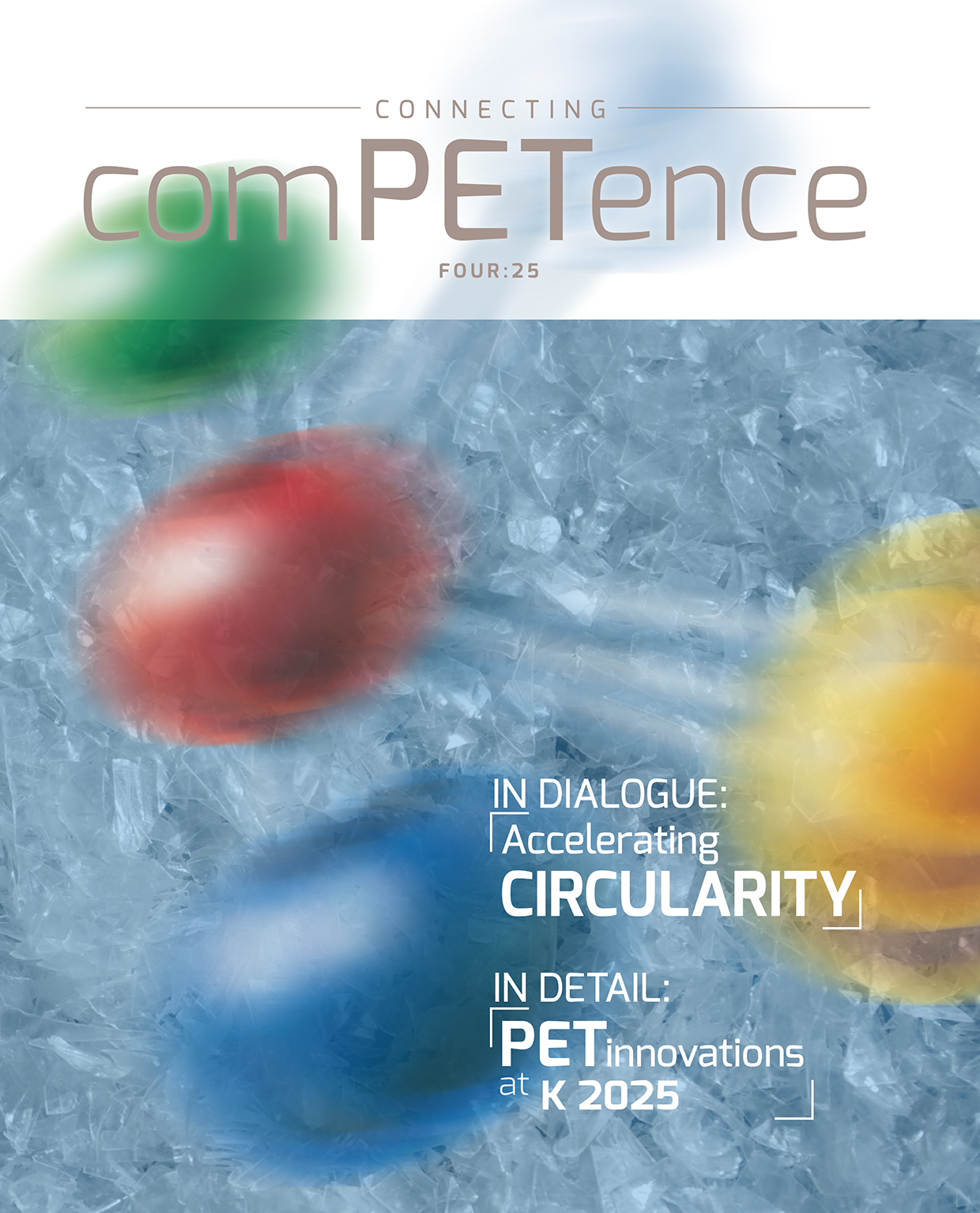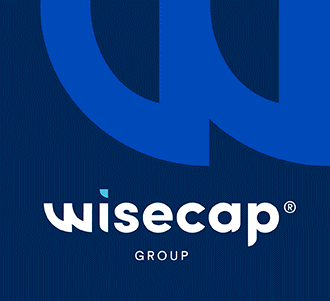

Sustainability
Sustainability, Circularity and Global Supply Chains - How is the PET packaging industry responding to market demands?
The pressure on plastic packaging is growing. - At the PETnology Europe conference in May 2025, a number of groundbreaking presentations and discussions emphasised how consumer behaviour, market demands and legislation are transforming the technological and logistical structures of the PET packaging industry. Particular focus was placed on achieving a balance between sustainability and economic efficiency, and on ensuring closed loops for PET and rPET throughout local and global supply chains.
The PET packaging industry is under increasing pressure from economic uncertainty and environmental urgency. Although PET remains the cornerstone of global beverage packaging, it is coming under growing scrutiny. Macroeconomic pressures, shifting consumer preferences and an evolving regulatory landscape necessitate a reevaluation of strategies throughout the value chain.
In order to meet market requirements and remove structural obstacles on the path to a circular rPET economy in Europe and worldwide, the PET packaging industry must respond not only with technology, but also with cooperation and advocacy concepts.
Between price pressure and the desire for sustainability
Rosemarie Downey from Euromonitor International gave an impressive demonstration of how consumer decisions influence the packaging market. Despite macroeconomic uncertainties, the global market for plastic packaging grew by 2% in 2023, while Europe stagnated at less than 1%. This is partly due to growing price pressure: rising living costs in Europe are compounded by persistently high inflation. Consequently, low-priced products and discount formats are becoming increasingly important, placing greater demands on packaging, which must be cost-efficient, functional and sustainable.
Consumer awareness of environmental issues continues to grow: according to Euromonitor, two-thirds of consumers are concerned about climate change, with plastic symbolising environmental pollution. Recyclability, reduced material use and sustainable designs are therefore key expectations of brands and packaging manufacturers. PET benefits particularly here: as a reliably recyclable material with a low carbon footprint - which is not always perceived as such - it is maintaining its position in the packaging portfolio.
Emerging markets remain crucial for growth. According to Euromonitor, India, China and Indonesia are expected to account for almost 40% of the projected increase in global packaging volumes by 2028. PET remains an important material in these markets due to its properties and economic advantages.
How the industry is promoting circularity
Sustainability is not only a duty, but also an opportunity for innovation and cooperation – this is both the credo and the call to action of the PETnology Conference 2025. Presentations by Husky, Otto Systems and rePurpose Global, as well as a panel discussion with renowned industry representatives (see page 40), made it particularly clear that true circularity can only be achieved through targeted technological development and collaborative political commitment.
Like others, Husky is pursuing a systemic approach here. In addition to continuously developing its machines and products, Sylvain Talarico and Frans Trimbos described how the company is investing specifically in advocacy. This involves educating consumers, influencing regulatory processes (e.g. at the UN plastic negotiations) and supporting brands and start-ups to navigate the regulatory environment. Otto Systems is investing in and partnering with rePurpose Global, with the aim of establishing sustainable recycling and educating people in the correct handling of plastic waste.
Further goals: creating jobs, removing waste, promoting recycling, ensuring fair wages and securing employment in Kerala, India.
In essence, it is about design for recycling, the use of monomaterials, tethered caps and the ability to process 100% rPET reliably. The aim is to harmonise production reliability and material efficiency with current and future legal requirements, such as the EU PPWR regulation.
Recycling and the supply chain – Europe‘s challenge
Achieving sustainable goals requires not only the right technologies, but also the establishment of a functioning rPET economy. In his presentation, Eric Dehouck from Eastman addressed precisely these profound structural problems Europe is facing in this regards. His main point: it is not enough to set ambitious recycling targets – robust local supply chains, uniform regulatory frameworks and investment security are also needed, and not just for recyclers.
Mechanical recycling remains the backbone of the PET recycling industry for clear bottles. However, chemical recycling – particularly through depolymerisation – is on track to redefine the industry’s technical and commercial potential. Eastman’s methanolysis process, originally developed in the 1970s, also enables the recycling of coloured, multilayer and textile-grade PET.
Referring to Eastman’s chemical recycling project in France and operational experience in the United States, Eastman demonstrated how methanolysis can be used to produce high-quality rPET, even from PET streams that are difficult to recycle. The recycling technology is ready, but the market in Europe is in crisis: recyclers are filing for bankruptcy and investments are being put on hold. According to Eric Dehouck, the main cause is unfair competition from imports originating in regions without comparable regulatory standards or quality requirements.
_______________
''When compared to other materials, PET has the lowest carbon footprint. So, let’s not forget: The primary role of plastic is to protect and preserve, whether it’s medication, food or drinking water. This is often overlooked in the discussion.'' - Frans Trimbos.
_______________
Europe must think locally about its circular economy, according to the urgent appeal. Exporting rPET products not only means CO2 emissions from transport, but also the loss of jobs and expertise. What is needed instead are fair competitive conditions, clear regulatory requirements, and the economic willingness to accept a fair price for genuine circularity and sustainability.
The efforts of Eastman, start-ups and many other organisations that presented at the PETnology conference are examples of how advanced recycling technologies can serve both environmental protection and industrial resilience goals. However, without clear market incentives and regulatory support, there is a risk that such innovations will not be exploited to their full potential. Eastman, in particular, has also highlighted the urgent need for a harmonised European framework that rewards quality, ensures the safety of raw materials and creates a level playing field for non-compliant imports. As one of the players investing in technology and infrastructure on an industrial scale, Eastman illustrates the transformative power of aligning innovation, investment and policy.
Nevertheless, economic viability remains the decisive bottleneck. Chemically recycled PET currently costs almost twice as much as virgin material. Without structural support – whether through policy, subsidies or customer willingness to pay – the technology is at risk of stagnating. The conclusion from the discussions and presentations at PETnology is therefore that achieving circularity requires consensus, clarity and consistency.
Other pillars of the legislation are:
- Extended producer responsibility (EPR)
- Single-use plastics directive (SUPD)
- Ecodesign regulation for sustainable products (ESPR)
These framework structures collectively push for recycling-friendly design, real-time traceability and greater accountability across the entire life cycle. Brands and processors must adapt quickly or risk being excluded from the market.
Conclusion: Circularity is a joint task
The PETnology 2025 conference has made it clear: consumers are committed to sustainability, politicians are setting clear targets – now it is up to the industry to work with technology partners, brands and regulators to develop practical, economically viable solutions.
PET and rPET remain key materials in the international packaging market. However, only through coordinated advocacy, technological advancement and fair framework conditions will it be possible to close global material cycles. Circularity is not a single solution, but a collective effort.
The EU Packaging and Packaging Waste Regulation (PPWR) sets ambitious targets: 90% collection by 2029 and 30% recycled content by 2030, rising to 65% by 2040. However, mechanisms for compliance with the regulation remain inconsistent across Member States, and industry stakeholders are calling for harmonised enforcement and accelerated deadlines.
Regardless of the type of mass balance approach adopted, without the coadoption of chemical recycling and mass balance, the chemical recycling industry will continue to be shrouded in uncertainty, leading to hampered industry growth.
The comPETence center provides your organisation with a dynamic, cost effective way to promote your products and services.

magazine
Find our premium articles, interviews, reports and more
in 3 issues in 2025.



